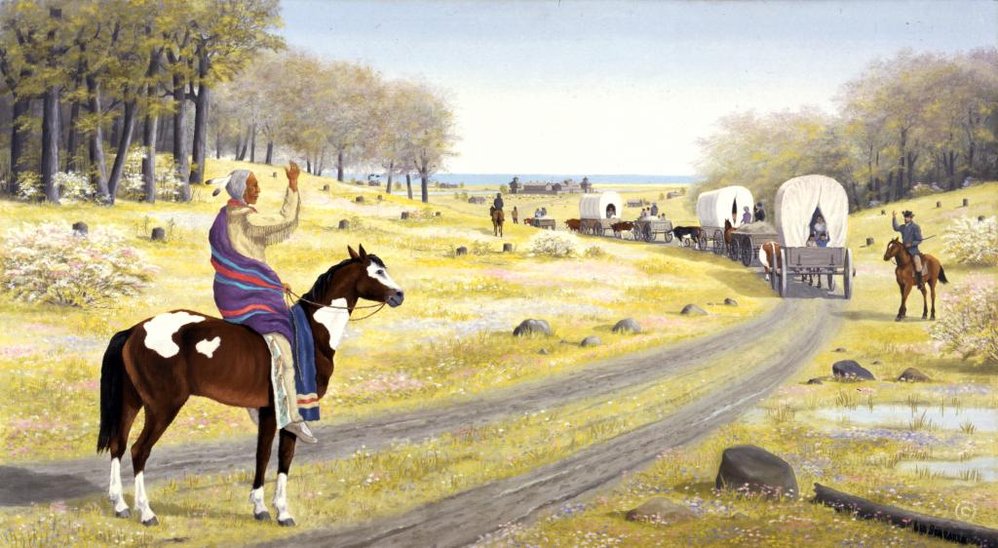
There are those who believe that land could not be settled or tamed without fences. Settlers used fences to claim land, fences to contain animals or keep them out, fences to separate, fences to divide.
For thousands of years, many nations of people lived and walked upon the land—Fox, Kickapoo, Potawatomi, Sauk, Winnebago—the land where prairie grass grew taller than a man. Sauk leader Black Hawk, deceived into signing a treaty he did not understand, led his people west across the Mississippi. Then, in 1831, Black Hawk returned to his village, Saukenuk, to plant crops. But what he found instead were white settlers who had fenced in the corn fields and plowed his ancestors’ graves and had moved into abandoned Sauk lodges. Black Hawk responded by settling in with 300 warriors and refused to budge. The next year he returned with 600. This startled the U.S. government. Black Hawk explained: “My reason teaches me that land cannot be sold…. The great spirit gave it to his children to live upon and cultivate as far as is necessary for their subsistence. As long as they occupy and cultivate it, they have a right to the soil… but if they voluntarily leave it, then any other people have a right to settle upon it. Nothing can be sold but such things as can be carried away.”
In May 1832, a large government expeditionary force arrived at Saukenuk. Black Hawk’s envoys approached the U.S. encampment under the flag of truce. But militiamen on guard were jittery and inexperienced. They opened fire. Three Sauk men fell dead and the war began. There was news of a massacre 20 miles west of Naper Settlement. 125 frightened settlers fled to Chicago’s Fort Dearborn for safety. Aptakisic, a Potawatomi Indian known to the settlers as Chief Half Day, alerted them to Black Hawk’s approach. One of the young settlers, Caroline Strong, was among the children evacuated to Fort Dearborn. She wrote a letter to her sister on July 12, 1832, and described the conditions at Fort Dearborn, while Fort Payne, a sturdy fortress could be built at Naper Settlement. George Martin, like many early settlers, believed in his government. On November 2, 1833, he wrote a letter to his family in Scotland. In that letter he stated “A treaty, which has long been spoken of, had taken place in Chicago… about three weeks ago…. The federal government has paid eleven hundred thousand dollars for all the land the Potawatomi have in the states of Michigan and Illinois…. Their land is not taken, as you suppose… but all purchased… and will be paid by installments over 25 years.” The $110,000 was never paid to the Potawatomi. Far north, Black Hawk was outnumbered by the United States Army.
The settlers returned to Naper’s Settlement and lived in wagons that encircled the newly built Fort Payne until September when they could return to their homes and resumed settling the land. No battle was ever fought; not a single arrow or bullet shot at Fort Payne.